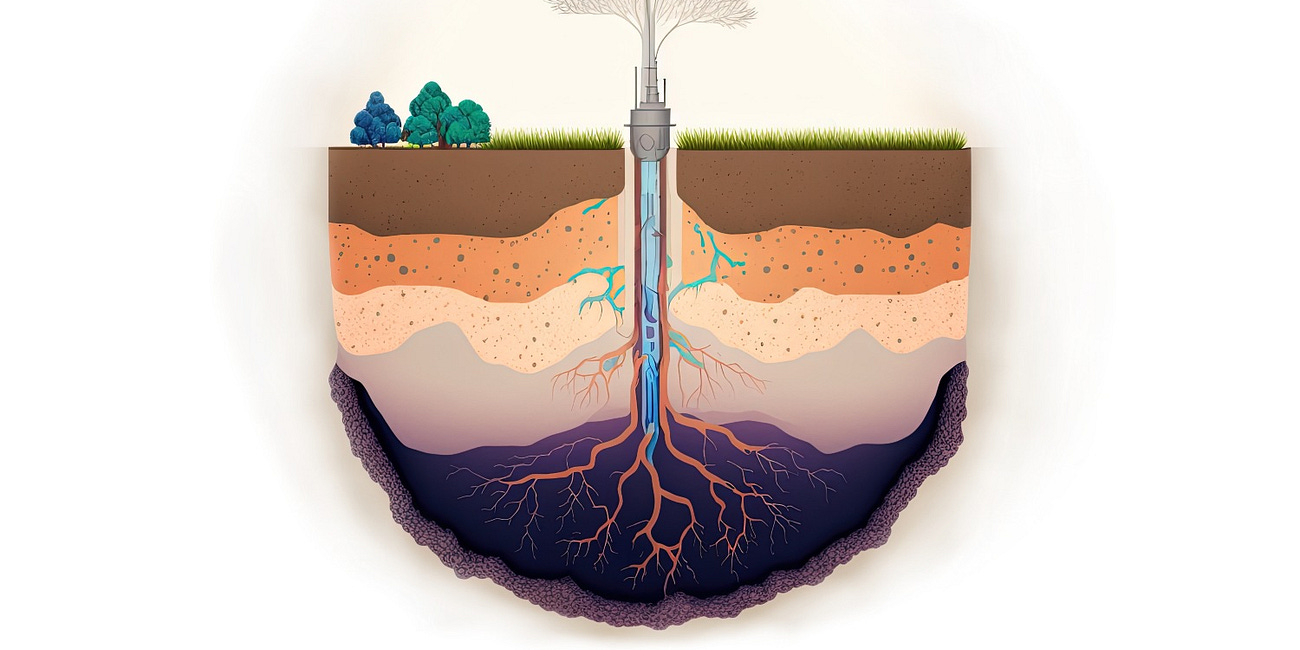CDR has three jobs, only one needs permanence
Arguments over CDR permanence miss the point when net zero, legacy emissions, and interim responsibility are conflated
There is currently much discussion about when permanent carbon removal should be required and when removals with a higher risk of reversal may be accepted. I believe people are talking past one another, conflating the three use cases of carbon removal.
1) Permanent CDR for net zero
In the first CDR use case, helping reach net zero, the whole point of permanent carbon removal is to enable a limited continued fossil fuel use where it makes sense. This may seem like a controversial statement, but there are almost no CO₂ emissions that are impossible to reduce to zero, however, some of them are expensive, very resource-intensive and may take time to develop. The role of CDR in net zero is to reach the target faster, cheaper and more affordably. There is a need to scale up permanent CDR solutions now to meet this need by net zero.
It's in this context that the permanence of removals is crucial. If we allow a continued limited fossil fuel use, in for example aviation or chemicals, then we must make sure the same amount of CO₂ is durably stored. If actors plant forests as compensation, that is not close to equal to choosing not to emit in the first place. Trees can burn, be cut down or disappear in a warming world. Their carbon may return to the atmosphere in decades, while fossil CO₂ warms the planet for millennia. Forest carbon can be used to offset forest loss though.
2) All CDR solutions for legacy emissions
There's a second, bigger use case for carbon CDR, removing historic carbon emissions, the debt that has accumulated in our atmosphere. For this use case, durable carbon removal is not the only type of CDR needed since you're not counterbalancing an ongoing fossil emission. Here, a cost-effectiveness framework should be used.
Forests are a cost-effective climate solution. They should be scaled up to their maximal sustainable capacity, and we are already removing 2 Gt per year through expanding forestation. But in the long run, they are not sufficient to pay off all the carbon debt to bring back temperatures to 1.5 °C. That will be a minimum of 500 gigatons. The total amount of additional forest carbon that can be stored on Earth on sustainably available land is in the order of about 100 gigatons. So even if we didn't care about permanence at all, we would still need the CDR solutions that just happen to be permanent, such as enhanced rock weathering, biochar, direct air capture and so on. Also note that capacity used to reach net zero can later be used to address carbon debt if the need for compensation goes away.
Even if we didn't care about permanence at all, we would still need the CDR solutions that happen to be permanent to meet our giant removal needs.
How much carbon will we need to remove?
There are a lot of projections and plans hinging on the question of how much carbon dioxide we need to remove (CDR), but few satisfactory answers.
3) All climate solutions for ongoing climate mitigation
There is a third use case where CDR can play a role, and that is actors taking responsibility for their ongoing emissions before reaching net zero. Even if they're reducing their emissions and plan to use permanent carbon removal for any remaining ongoing fossil emissions, they should still take responsibility for ongoing emissions today. Here, there is no need to only use permanent carbon removal. A mix of climate solutions, looking at what is needed to reach global targets, is probably the best approach. That's the way we do it with the Milkywire Climate Transformation Fund, having three pillars: nature restoration and protection, decarbonisation and durable carbon removal to help scale up that nascent sector. The durable CDR pillar is by no means more important than the others. (People often talk about the need for near-term solutions to be deployed to avoid tipping points; it is in this use case that this has a place, not in the net-zero one.)
One example of the conflation of the three use cases of CDR is in the SBTi consultation on their Net Zero Standard 2.0. Two options are presented for the removal scale-up requirements for net zero. One of them being like-for-like removals (permanent CDR for fossil emissions), the other one being a gradual transition where temporary carbon removal is partly allowed to fulfil the CDR scale-up requirement, transitioning into only durable carbon removal after net zero. However, the reason for having that requirement is to build the capacity to reach net zero targets. Since only permanent carbon removal can be used to counterbalance fossil emissions at net zero, why would there be a requirement to scale up other types of removals? Mixing the net zero use case with the ongoing responsibility breaks the logic of the scale-up requirement.
Viewing the three use cases separately helps avoid the confusion. Permanent CDR for very limited ongoing fossil emissions after net zero, all types of removals for paying off the carbon debt, and all types of climate solutions for taking responsibility for today's emissions.
More on comparing temporary and permanent carbon removal in this article:
Are temporary and permanent carbon stores interchangeable?
Are three trees worth one rock? Permanent storage is always best, but given realistic assumptions on discounting of future damages, as well as long-term climate adaptation - carbon storage lasting centuries could be made comparable to permanent storage. However, carbon re-released before peak warming needs to be replaced and cannot be equalized to perma…







An aside on your 3ʳᵈ point/role for CDR:
Another way of looking at it, or framing it, is CDR in this role for the purpose of minimizing peak temperature.
And, just to illustrate, I am going to use the values that David Ho uses in his strange Nature letter-to-the-editor "Carbon dioxide removal is not a current climate solution — we need to change the narrative" [https://www.nature.com/articles/d41586-023-00953-x].
Despite a lot of personal commentary and opinion, Ho makes just two cites of scientific literature to support just these two factual claims he makes:
• we emitted 40.5 GtCO₂ yr⁻¹ in 2022 [P. Friedlingstein et al.Earth Syst. Sci. Data14, 4811–4900;
2022]
• "In reality, residual emissions will probably be 18% of
our current total (i.e., ~7.3 GtCO₂ yr⁻¹), so we will have to scale up CDR substantially to reach net zero." [H. J. Buck et al. Nature Clim. Change
https://doi.org/j4jg; 2023]
So, for all his deprecation of CDR throughout the piece, Ho *himself* says we'll still *NEED* ~7.3 GtCO₂ yr⁻¹ of CDR to achieve net-zero.
But his argument then is that scaling up CDR now would be a waste, and we should instead *wait* to begin scaling up *until* we have already reduced gross positive emissions significantly first - say, to that 7.3 GtCO₂ yr⁻¹ level.
But let's see what the cumulative emissions and peak temperature impacts are in that scenario vs a scenario where you scale the CDR concurrent with emissions reductions.
In scenario one, let's say we reduce positive emissions from 42 GtCO₂ yr⁻¹ in 2024 to residual 7.3 GtCO₂ yr⁻¹ in 2050, and then hold positive emissions constant as we scale up from 0 to 7.3 GtCO₂ yr⁻¹ of CDR by 2075.
On a straight line basis cumulative emissions are 640.9 GtCO₂ in 2024-50, and a further cumulative positive 94.9 GtCO₂ in 2050-75, for a total of net 732.2 GtCO₂.
But if, instead, you used and scaled up CDR to Ho's required quantity of 7.3 GtCO₂ yr⁻¹ *during* the same period 2024-2050, then we have the same 640.9 GtCO₂ of gross positive emissions 2024-50 but for net cumulative emissions that is reduced by 94.9 GtCO₂ of cumulative CDR, for a total of net 546 GtCO₂. (Net emissions post 2050 would, presumably, continue at ~0 GtCO₂ yr⁻¹, unless CDR were further scaled.) This more than a quarter less than the cumulative emissions in Ho's proposed sequencing, were deployment of CDR is described as "next to useless" if done before emissions are already drastically reduced.
Turning to the difference in peak temperatures, the IPCC AR6 WGI estimates the transient climate response to cumulative CO₂ emissions (TCRE) as approximately 0.45°C/1,000 GtCO₂.
So a reduction in peak temperature at the peak of cumulative emissions of 732 - 546 = 186 GtCO₂ would be expected to be 186/1000 * 0.45 ≈ 0.1°C. Now, we often hear about "every ⅒ᵗʰ of a degree counts!" and "limiting any overshoot is critical, because just restoring temps lower after a peak can't reverse all the non-temperature impacts and/or avoid tipping points." So, "CDR now" is *not* "next to useless" if you consider this reduction in peak temperature valuable.